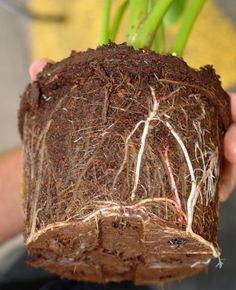4 Easy Ways to Fix Root Rot

Root rot is a common and frustrating problem that can affect any plant, both outdoor and indoor. It occurs when the roots of a plant become infected with fungus or bacteria due to waterlogged and poorly aerated soil conditions. Not only is it harmful to your plants, but it can also be tough to detect until it’s too late. If you suspect that your plant may be suffering from root rot, don’t panic! In this article, we will discuss four easy ways to fix root rot and bring your beloved greenery back to life.
1. Improve Drainage and Aeration
The leading cause of root rot is poor soil drainage and inadequate aeration. To fix the problem, you need first to address its source. Make sure that you are using well-draining soil for your plants, such as a mix of soil, perlite, and peat moss. Additionally, ensure that the containers you use have sufficient drainage holes at the bottom.
If your plant is in the ground, consider raising its planting bed to improve drainage or integrating organic matter like compost and aged manure into the soil to boost aeration. Remember always to be careful not to overwater your plants and maintain a proper watering schedule.
2. Prune Affected Roots
After addressing the drainage issue, carefully remove your affected plant from its container or the ground and examine its roots. Gently wash away the excess soil until you can clearly see the roots’ actual condition.
Using sterilized pruning shears or scissors, cut away any soft, brown or blackened mushy roots – these are telltale signs of root rot. Ensure you only leave healthy, white roots behind before repotting or replanting your plant.
3. Treat with Anti-Fungal Solutions
Once you’ve pruned all affected roots, treat your plant with an anti-fungal solution specifically designed for root rot prevention. These products can be found at your local nursery or garden center, and following the package instructions is vital for effective results. Applying an anti-fungal solution helps to further decrease the chances of the disease from spreading to healthy roots.
4. Repot or Replant
After treating your plant with an anti-fungal solution, it’s time to give it a fresh start. If it’s a container plant, use a new pot with drainage holes, filled with fresh, well-draining soil mix. If you’re replanting it in the ground, enrich the planting site with compost or organic matter to improve soil quality.
Carefully repot or replant your plant, ensuring that its remaining healthy roots are not damaged during the process. Once done, water the plant moderately and place it in an area where it receives proper sunlight for its specific requirements.
In conclusion, fixing root rot might seem daunting at first, but by improving drainage and aeration, pruning affected roots, treating with an anti-fungal solution, and repotting or replanting your plant in ideal conditions, you can nurse your green friend back to life. Regularly monitor your plants’ health and maintain good watering practices to prevent future occurrences of root rot.






